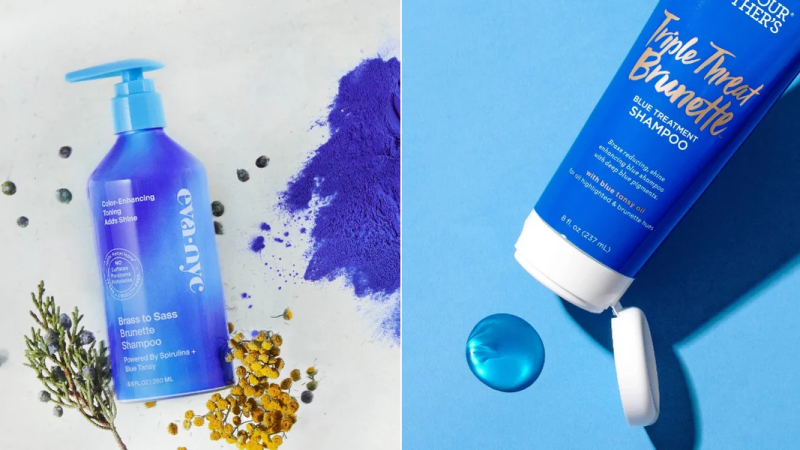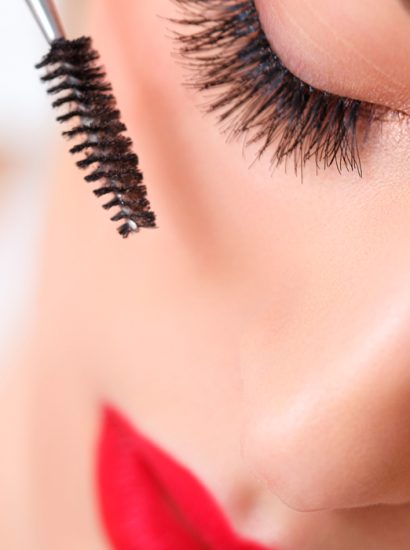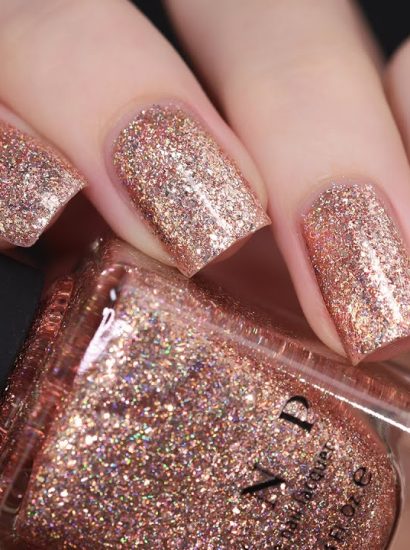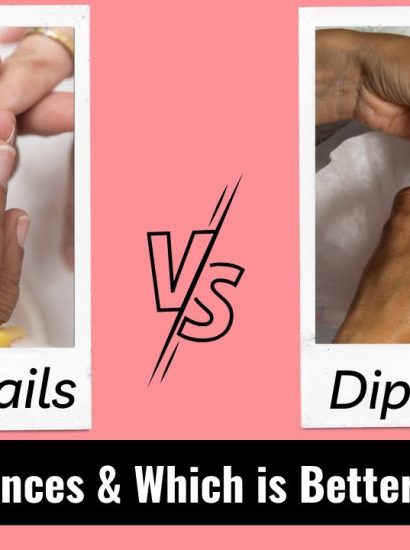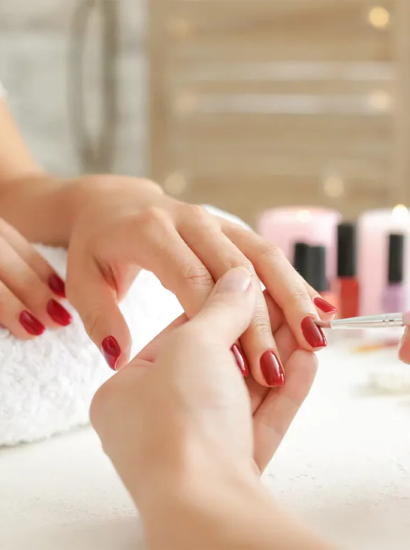Brassy tones are the bane of every blonde, brunette, and highlighted hair lover’s existence. After a few weeks of sun exposure, hard water, or frequent washing, that cool salon finish starts to fade, revealing unwanted orange and copper undertones. That’s where blue toning comes in — a secret weapon colorists swear by to restore balance, shine, and cool brilliance.
In this article, you’ll uncover 10 powerful secrets of blue toning — what it is, how it works, and how to use it safely for silky, brass-free hair. Whether you’re a salon regular or a DIY beauty enthusiast, this guide will teach you everything you need to know about mastering the art of blue toning.
What Is Blue Toning?
Blue toning is a color-correction process that neutralizes orange and brassy undertones in brunette or lightened hair. It works by applying products that contain blue pigments, which counteract the warmth caused by fading or oxidation.
Think of the color wheel: blue cancels out orange. When applied properly, blue toning restores cool, ashy, or neutral hues, making your hair look fresh and glossy — as if you just walked out of the salon.
Why Hair Turns Brassy or Orange
Before you can fix brassy tones, it helps to understand why they happen.
Hair color fades over time because of:
- Sun exposure (UV light breaks down cool pigments)
- Hard water minerals like copper and iron
- Heat styling and frequent shampooing
- Chemical treatments (bleach or dye oxidation)
When the cooler blue or violet tones fade, the underlying warm pigments — yellow, red, and orange — become visible. That’s when blue toning steps in to restore the coolness.
Blue vs. Purple Toner: What’s the Difference?
People often confuse blue toning with purple toning.
The difference lies in what tones they correct:
- Blue toners neutralize orange or copper tones — perfect for brunettes or darker blondes.
- Purple toners cancel yellow tones — ideal for lighter blondes, silvers, and platinums.
If your hair looks too orange, use blue toner. If it’s too yellow, use purple toner. Some products even combine both for balanced results.
Types of Blue Toning Products
There are many ways to incorporate blue toning into your routine. Here are the most popular types:
Blue Shampoo and Conditioner
Great for maintenance between salon visits. Use 1–2 times a week.
Blue Toner or Gloss
Professional or at-home treatments that deposit pigment for a longer-lasting tone.
Blue Toning Mask
Provides nourishment and toning at the same time — a lifesaver for dry or color-treated hair.
Blue Toning Drops
Highly concentrated pigments that you can mix into your regular conditioner or mask. Perfect for customized color control.
How to Use Blue Toning at Home
Follow these steps to get salon-quality blue toning results at home:
- Start with clean, damp hair. Remove product buildup with a clarifying shampoo.
- Apply blue toner or shampoo evenly. Focus on the brassy areas.
- Leave it on for 3–5 minutes. Adjust time based on desired tone (longer = cooler).
- Rinse thoroughly. Avoid over-toning, which can make hair appear dull or gray.
- Follow with a hydrating conditioner or mask. Blue pigments can be slightly drying.
Pro Tip: Always wear gloves! Blue pigment stains skin easily.
Best Hair Colors for Blue Toning
Blue toning is especially effective for:
- Light brown to dark blonde hair
- Highlights, balayage, or ombré
- Bleached brunette hair
- Ash brown or mushroom blonde shades
If you have darker brown or black hair, blue toning can still help refine warmth but won’t lighten your color.
Common Blue Toning Mistakes to Avoid
Even the best blue toner can backfire if used incorrectly.
Avoid these mistakes:
- Over-toning: Leaving it on too long can create muddy or gray hues.
- Using too often: Limit use to 1–2 times per week.
- Wrong shade: Blue toner for orange tones, purple for yellow tones.
- Skipping hydration: Toners can dry out your hair. Always use a conditioner afterward.
When in doubt, consult your colorist for personalized advice.
DIY vs. Salon Blue Toning: Which Is Better?
Both have their pros and cons:
| DIY Blue Toning | Salon Blue Toning |
| Affordable | Professional precision |
| Convenient | Custom color-matching |
| Great for upkeep | Longer-lasting results |
| Risk of over-toning | Expert hydration & shine |
For quick fixes, a blue toning shampoo is perfect. For stubborn brassiness or full color refresh, a professional gloss is the way to go.
How to Maintain Your Blue-Toned Hair
Keep that cool, glossy tone longer by following these habits:
- Wash hair with sulfate-free shampoo
- Use cold or lukewarm water to prevent fading
- Protect from sun and chlorine with UV sprays
- Avoid heat styling or always use a heat protectant
- Refresh blue toning once a week or as needed
With proper care, your tone can last up to 4–6 weeks before needing a full refresh.
The Science Behind Blue Toning
Color theory explains why blue toning works so effectively. On the color wheel, blue is directly opposite orange, meaning the two neutralize each other. When blue pigment coats hair strands, it visually cancels out orange reflections, resulting in a more neutral or ashy tone.
This isn’t just visual trickery — blue toning actually alters how light reflects off the hair shaft, creating a cooler, silkier finish.
Conclusion
Blue toning isn’t just a beauty trend — it’s a science-backed solution for anyone struggling with unwanted brassiness. By understanding how blue pigments neutralize orange tones, you can keep your hair looking salon-fresh, cool, and glossy week after week.
Whether you choose a blue shampoo, a professional toner, or a DIY mix, consistency and care are key. Remember: the secret to silky, brass-free hair isn’t more dye — it’s mastering the art of blue toning.
FAQs
1. How often should I use blue toning products?
Use blue toning shampoo or conditioner 1–2 times a week. Overuse can make your hair appear dull or ashy.
2. Can I use blue toning on blonde hair?
Yes, but only if your blonde has orange tones. If it’s yellow, use purple toner instead.
3. Will blue toner work on natural (undyed) hair?
Not effectively. Blue toning works best on color-treated or lightened hair where orange undertones are exposed.
4. Can I mix blue and purple toner together?
Yes, in moderation. Mixing them can balance both orange and yellow tones, especially for multi-dimensional highlights.
5. How long does blue toning last?
Depending on your shampoo routine and hair type, results last about 2–4 weeks. Regular maintenance helps extend it.
Also read: 10 Reasons to Try Arrowroot Powder Dry Shampoo: A Natural Solution for Fresh, Oil-Free Hair

